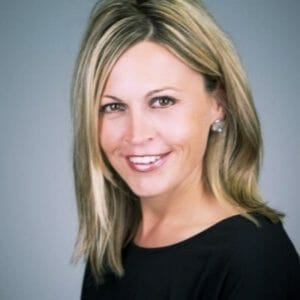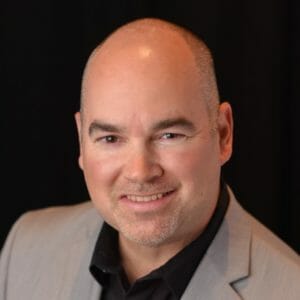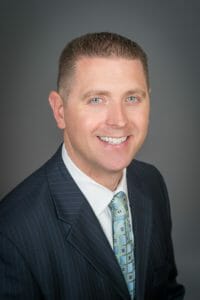When Virtua Health has a COPD patient ready to leave one of its New Jersey hospitals but not ready for home, discharge planners can tap into a growing network of rehabilitation specialists.
Those specialty providers happen to be skilled nursing facilities with dedicated pulmonary units featuring onsite, board-certified pulmonologists; staff respiratory therapists; access to lab and radiology services; and seven-day-a-week therapy.
They include places like Laurel Brook Rehabilitation and Healthcare Center, managed by Marquis Health Consulting Services, one of many providers nationwide using specialization to maintain or grow local post-acute market share.
While specialty programs have a long history in skilled nursing, the latest iterations depend largely on bringing advanced practice clinicians and hospital staff into buildings and implementing technology that drives outcomes — while making results easily reportable. Those are key differentiators for providers looking to secure hospital referrals and stay in network with insurers, especially crucial as COVID-19 continues to riddle the U.S.
Delivering high-quality care for high-needs patients also might be one way to limit acute care’s growing reliance on alternatives such as hospital-at-home.

“You’ll continue to see more and more of this,” Jennifer Hertzog, vice president of marketing and business development for Marquis, told McKnight’s Long-Term Care News. “COVID was reinforcement that specialized programming, enhanced acuity-management partnerships and collaborations via this specialized programming work.”
The rise of accountable care organizations and managed care’s increasing prevalence are also creating opportunities for skilled providers, especially those who can demonstrate prowess with cardiac, pulmonary, renal failure, sepsis and neurologically impaired patients.
Health systems and insurers are “going to have to start looking at these specialty providers not just as another vendor, but as partners,” says Justin Border, OTR/L, who helps facilitate SNF-hospital partnerships as founder and president of Titan Healthcare Solutions. “They are helping them achieve operational outcomes that they never really give them credit for.”
Choosing a specialty
Today’s providers are tackling a wider range of specialties than ever.
In Vermont, Berlin Health and Rehab reported a 75% reduction in facility-acquired pressure ulcers after adding weekly rounds with a board certified wound ARPN and extra coverage from a third-party wound care specialist.
Symphony Care Network in July announced its new Serenata Geropsychiatric Care program to address behavioral concerns related to dementia or other neurological issues. It will include geri-psychiatrists, social workers, therapists and nurses; provide additional neuropsychological cognitive assessments and screenings; and train staff in crisis prevention and de-escalation.
Building out any program can be a lengthy process that includes collaboration with local health systems; data-sharing; best practices that span settings; and investments in personnel, equipment and physical plant. One thing it shouldn’t include: any kind of guessing as to what the market will support.

Border suggests facilities start by assessing what they’re doing, what they can provide and what they can further develop. It isn’t just consideration of personnel, but physical requirements, too. Renal programs may need dedicated space for bedside dialysis, as well as the capacity to handle biowaste. Respiratory units will require supplemental oxygen delivery, either pumped through in-wall piping or through concentrators.
“The worst thing you can do is say you want to go gung-ho, full-on specialty service but not be prepared to provide it,” Border says. “The payer sources and the referral sources tend to have long memories. When they think you weren’t as prepared as you maybe you presented yourself to be, it’s a long time before you’ll get another chance.”
Tech and teamwork
Understanding what partners truly need requires dialogue with hospital service line leaders before any investments are made, Hertzog says.
“Then our first step is to recruit and align specialists,” she says. “We look for a partner that is aligned with our primary hospitals and the goals that we have overall. But it’s speciality programming that is more than just a specialist at the bedside.”
Each building’s team reviews monthly metrics including length of stay and readmissions; clinical outcomes; and how well patients move through the continuum of care. To that end, management is implementing technology that can help smooth care transitions and put patients, as well as provider partners, at ease.
One recent investment is in HillRom’s Life 2000, a one-pound, portable ventilator for patients who prefer to be mobile. They can begin using it in the skilled nursing facility, then program coordinators ensure similar durable medical equipment is delivered to home.
Marquis has a readmission rate of 8% for patients in their cardiopulmonary program, which helps attract more resources. In some locations, service line hospital staff come to the SNFs to train staff “because they see value in the outcomes we’ve been able to produce collaboratively,” Hertzog says.
Letting the heart guide
At iCare Health Network, specialty programs grew out of a longstanding focus on complex patients, ranging from those with substance use disorders to those in need of memory care. Its congestive heart failure program was a logical extension of a model blending social support with advanced nursing services, such as medication-assisted therapy.
The organization recently added rounding pulmonary specialists in four buildings that already had heart programs, each operating as Touchpoints Rehab. ACOs also have made service requests, including the latest addition in June.

“It sort of layered on itself until (the Touchpoints buildings) became really specialized,” says David Skoczulek, vice president of business development. “Once we built the program, the rest of it continued to follow.”
Two corporate LPNs and a registered nurse director track CHF patients and others who need a readmission prevention protocol. They coordinate with APRNs, cardiologists and discharge planners, which has led to several quarters without hospital readmissions, Skoczulek says. Transitional care nurses also work with patients who need advanced therapies, such as the inotropic drip milrinone.
“We obviously want all these patients to follow a very specific clinical pathway and we do that by trying to be the experts on it,” says Skoczulek, noting that includes guiding patients into home care arrangements known to successfully handle infusion or other advanced treatments.
“The level of integration just continues to build, and we love that,” he adds. “We don’t find that the networks feel like they’re being squeezed out of centers. That really is the future.”




